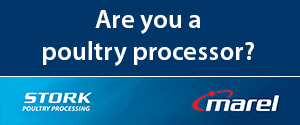Linpac explores flexible attitude towards meat-eating
 A growing trend of ‘flexitarianism’ is driving a change in packaging, according to director of innovation at LINPAC, Alan Davey.
A growing trend of ‘flexitarianism’ is driving a change in packaging, according to director of innovation at LINPAC, Alan Davey.
Flexitarians are ‘flexible vegetarians’ who have a meat free meal at least once a week, while others only eat meat on rare occasions. The flexitarian diet is increasing in popularity allowing consumers the flexibility to adapt their diet to their preferred lifestyle, social life or health conditions.
Sensing a shift in consumer eating habits and attitudes, Mr Davey says this trend is set to grow in the future and packaging manufacturers must respond to satisfy consumer needs.
LINPAC delivers packaging products for the dairy, meat, fish and poultry, bakery, fresh produce, food service, chilled and prepared food markets and its trays, designed for meat and fish, are arguably one of the company’s biggest selling ranges.
Mr Davey comments: “Packaging sets one product apart from another on the supermarket shelf and is the first thing that attracts a consumer to take a closer look at an item.
“If a consumer is looking to manage the amount of meat they include in their diet for health and wellness reasons, we also tend to see a preference for green coloured and environmentally friendly packaging. The two desires seem to be interlinked due to some consumers’ concern over the environmental impact of meat production.
“More consumers are buying green coloured packaging and placing greater importance on the eco-friendliness of products. Retailers and manufacturers need to communicate the suitability of their products to those customers.”
In some European countries dedicated packaging for the vegetarian and non-meat sector has really taken off. LINPAC has been at the forefront of this sector since 2011 when a Dutch customer approached the company in need of green coloured trays. Four years later, LINPAC is now supplying 35 million trays to six customers in five different shades of green.
The fresh food packaging manufacturer offers a bespoke, adaptable and flexible service, creating total pack solutions to meet every packer, retailer and consumer need.
Mr Davey says: “In addition to this, growing numbers of consumers believe meat alternatives use higher quality ingredients and are therefore healthier. For retailers and brands, using premium packaging can help support this positioning. For example, some meat-free sausages and burgers that we see on our shop shelves are packed in “butcher style” packaging to create the same premium and personal experience created by your local butcher.
“When we go to the supermarket to buy meat, the product is clearly visible through the pack. We can see what we’re buying.Transparent packaging is traditionally seen across the meat category and allows consumers to see the freshness and quality of the product, building trust in the retailer and brand. We are now seeing this move in the vegetarian category as well.”
Latest research shows three in ten consumers now consider themselves as flexitarian providing an opportunity for packaging innovation.
“Flexitarians who still enjoy the taste of meat are more demanding when it comes to the taste of meat-free products,” says Mr Davey. “Today, manufacturers are offering a greater variety of vegetarian prepared foods, however they have to continue creating new flavours to grow the sector further. For packaging companies, these new tastes will be emphasised through loud, bold and colourful designs on the packs, grabbing the attention of the flexitarian consumer.
“According to recent research, meat alternatives are predicted to grow by 12 per cent between 2015 and 2020. A desire to cut down on meat, rather than cutting it out altogether, is not a short term fad but a trend that has established itself over the last few years. Food manufacturers will continue to address this by creating new suitable meat free product alternatives and expect new packaging innovation to match.”


































